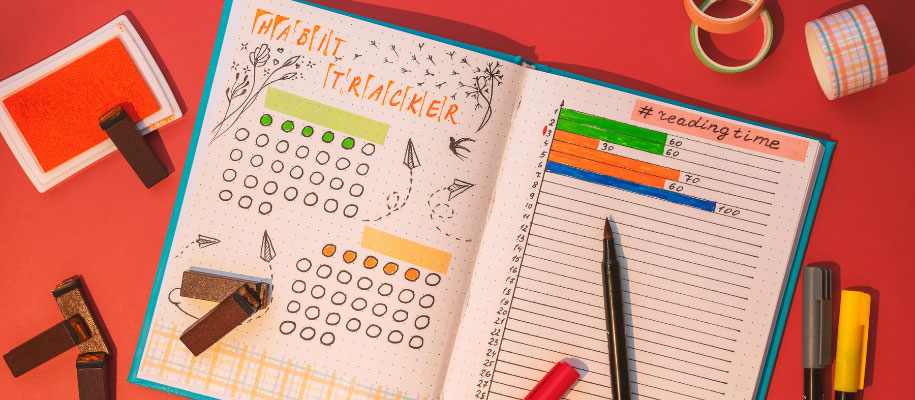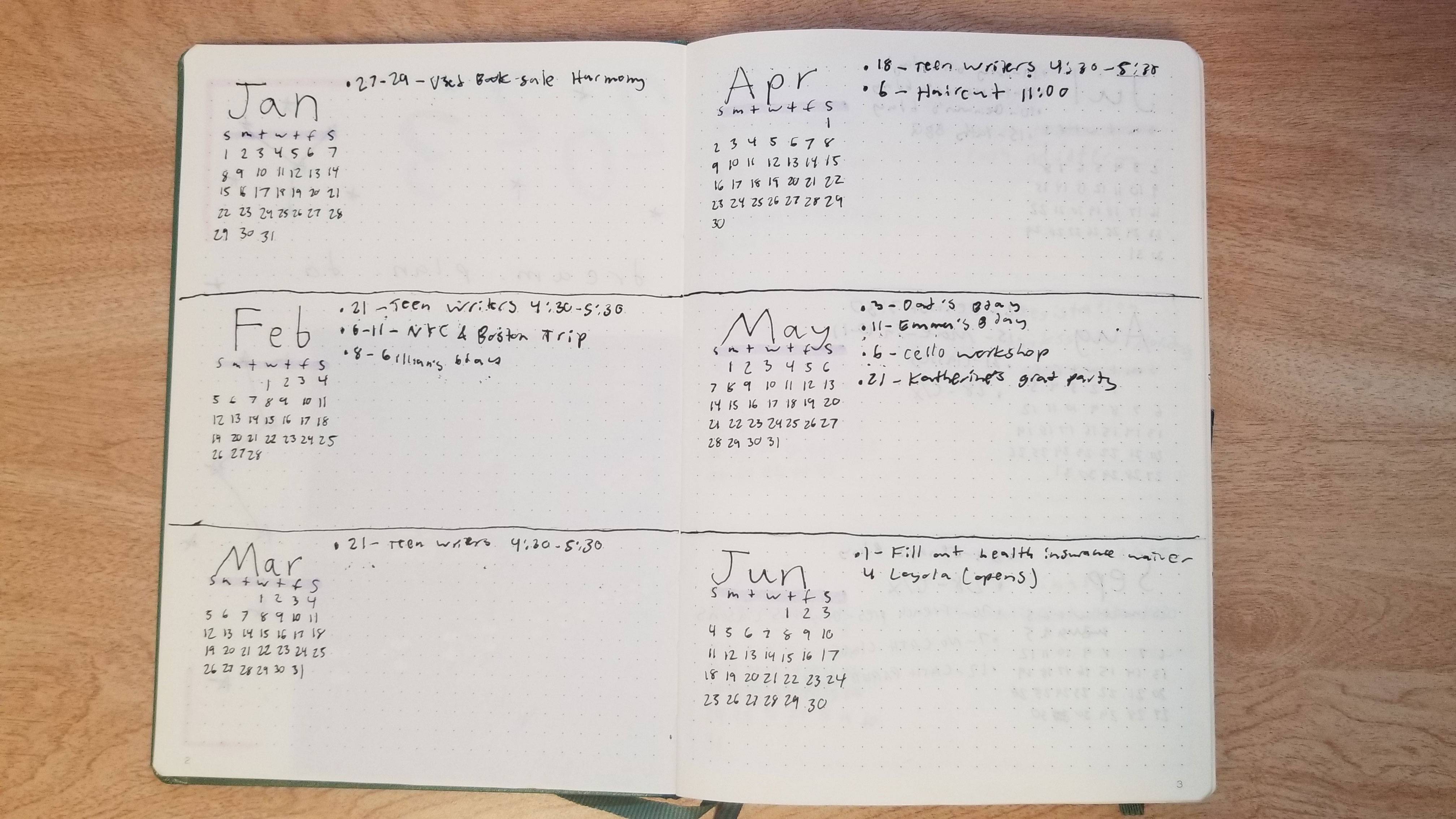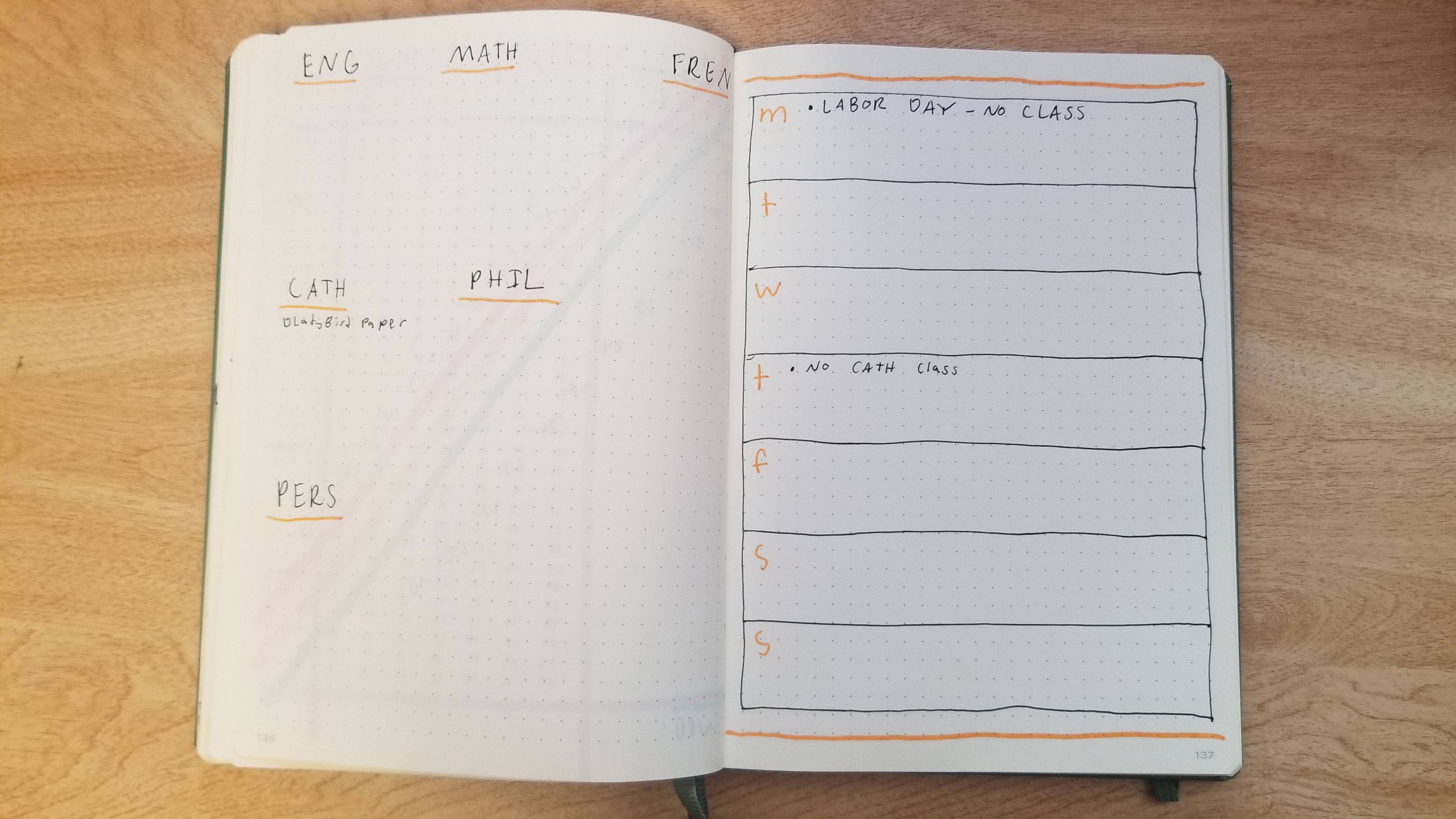How many times have you started using an organizational method only to find out it doesn’t work for you? Most of us have had moments where we forget about important tests or assignments because our organization fails. Our phone reminder goes off, we snooze it, and we forget about it. We buy a nice planner at the start of the semester but stop filling it in by mid-September. The notes in pen on the backs of our hands get smudged off. Bright yellow sticky notes get lost somewhere in our bags. It goes on and on and on. I used to be there too, until I found out about the bullet journal.
What is a bullet journal?
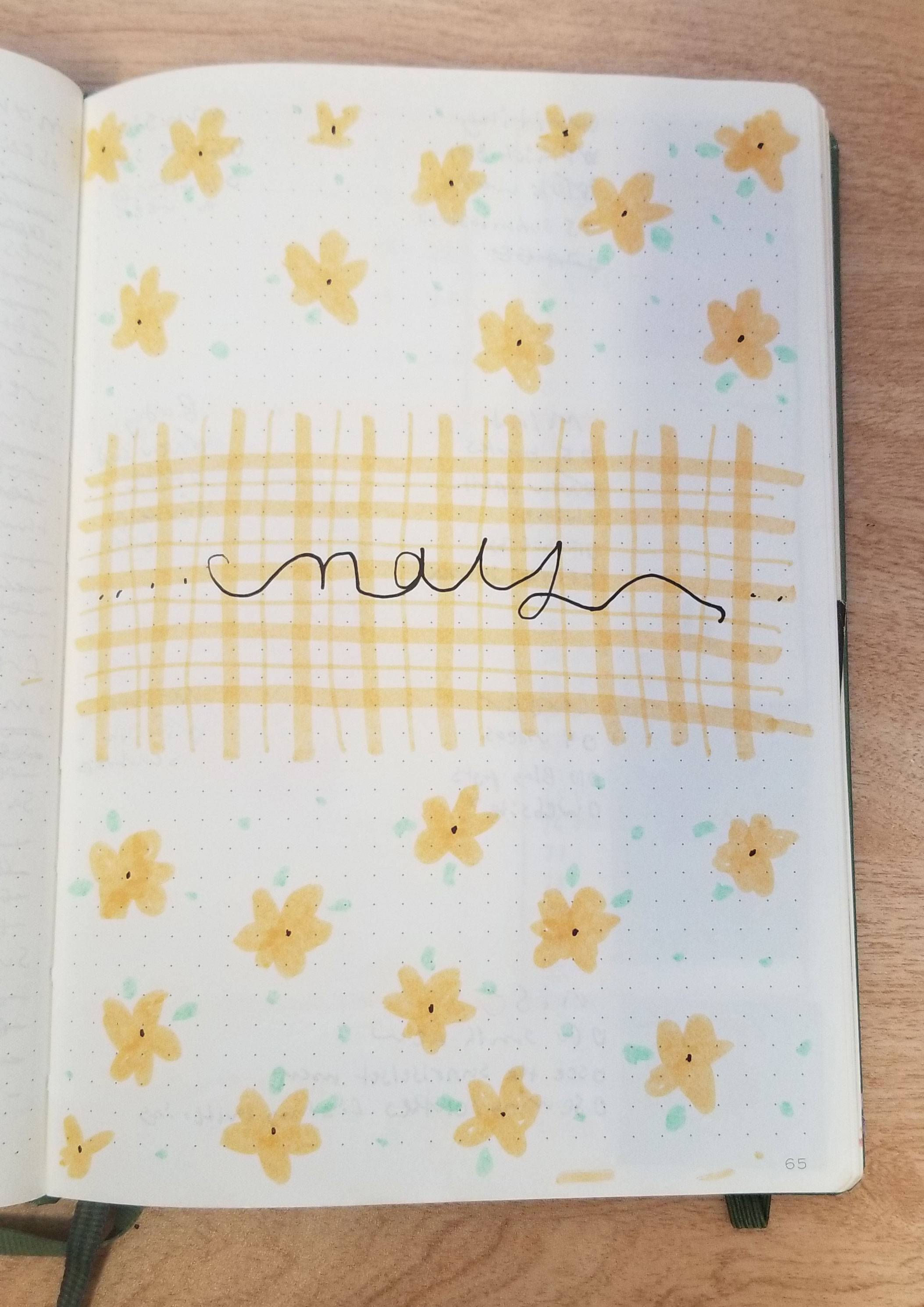 Bullet journaling is an organizational method named after both the use of bullet points and the dotted pages of the notebook rather than lined ones. I’ve been using a bullet journal for the past five years and have found that it works much better for me than traditional planners ever did. While most planners require you to stick to their preset format, bullet journals can take on whatever format you want, letting the notebook work with your life rather than against it. You can add the pages you need without skipping past the ones you don’t, allowing you to be even more focused. Plus, everything you could possibly need to remember is in one place—no more forgetting homework assignments because they ended up on a random sticky note. With so many of today’s assignments online, it can be hard to feel fulfilled after you finish them since all the reward you get is a little “submitted” indicator. Crossing a task off in a notebook can be ridiculously satisfying and can keep your motivation up so you can get through the rest of those assignments. And the best part is that setting up your own bullet journal is super easy!
Bullet journaling is an organizational method named after both the use of bullet points and the dotted pages of the notebook rather than lined ones. I’ve been using a bullet journal for the past five years and have found that it works much better for me than traditional planners ever did. While most planners require you to stick to their preset format, bullet journals can take on whatever format you want, letting the notebook work with your life rather than against it. You can add the pages you need without skipping past the ones you don’t, allowing you to be even more focused. Plus, everything you could possibly need to remember is in one place—no more forgetting homework assignments because they ended up on a random sticky note. With so many of today’s assignments online, it can be hard to feel fulfilled after you finish them since all the reward you get is a little “submitted” indicator. Crossing a task off in a notebook can be ridiculously satisfying and can keep your motivation up so you can get through the rest of those assignments. And the best part is that setting up your own bullet journal is super easy!
Related: Why Every College Student Should Keep a Planner
Organizing your bullet journal
While most people use notebooks with dotted paper for bullet journaling, any kind of notebook works—it’s all up to you. There are also multiple options for what to put at the start of your journal. Some common intro pages include indexes, which keep track of what’s on each page; keys, which indicate what each symbol means; and future logs, which help you plan for the upcoming months. Future logs are especially helpful for students because you can put all the important dates from your syllabus in them so you don’t forget anything. Since most journals start at the beginning of the year, this is also a good spot to write down all your goals for the school year or semester. You can add as many or as few of these as you want, as long as it works for you. If you find you didn’t use something at all one year, don’t add it to your journal next year.
Month-by-month
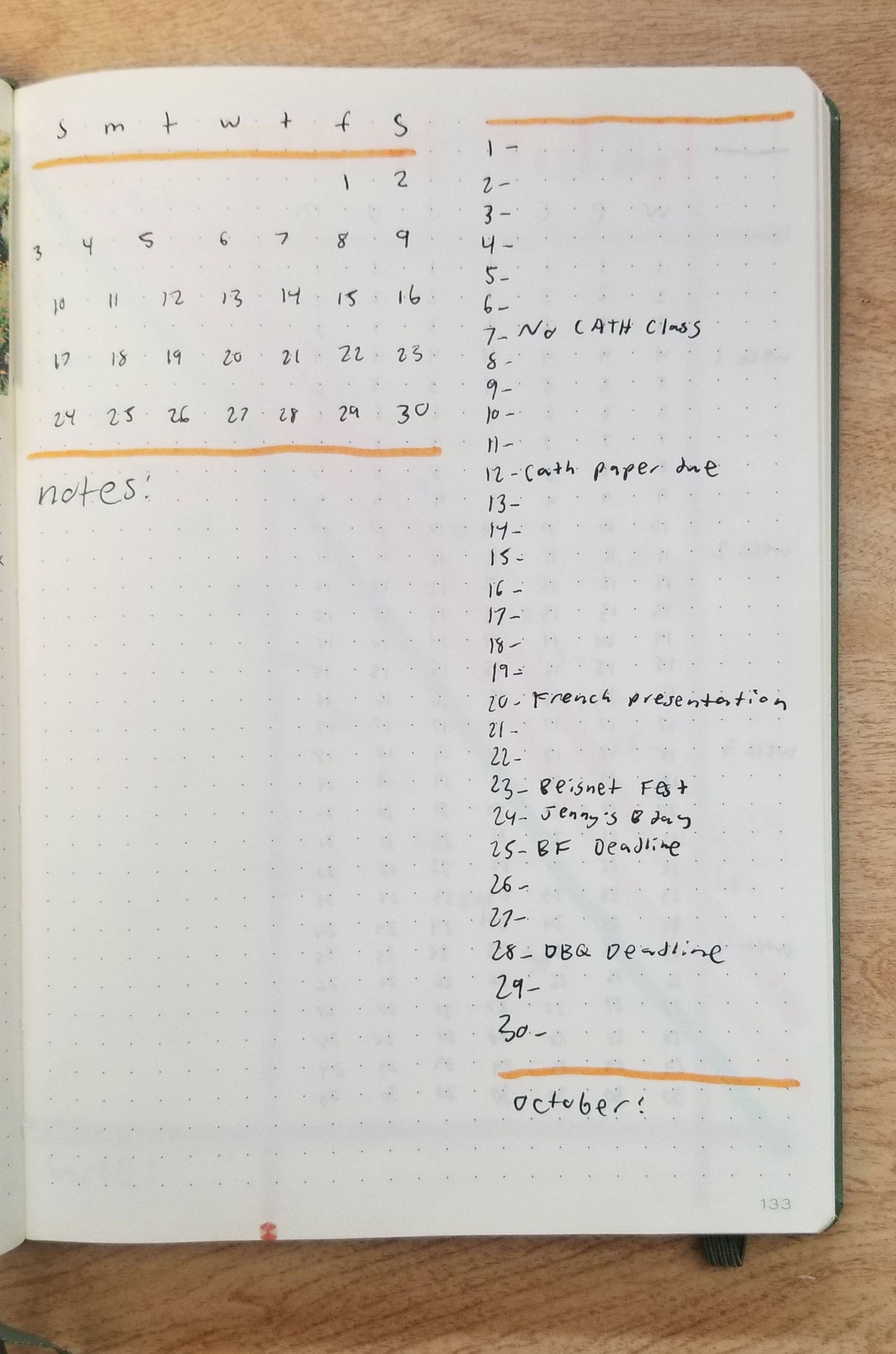 The same applies to the rest of your journal too, such as your monthly logs. These change every month and are a handy way to keep track of dates, goals, and to-do’s for each month. Another common part of a monthly log is called a habit tracker. These can be used to track practically anything. If you play an instrument and want to know how often you practice, or if you play a sport and want to create a training plan, this could be a good option for you. Personally, I use a version of a habit tracker to record how many words I write each month. Even though it took me a while to figure out this version, having a style that I like makes me more productive in the long run.
The same applies to the rest of your journal too, such as your monthly logs. These change every month and are a handy way to keep track of dates, goals, and to-do’s for each month. Another common part of a monthly log is called a habit tracker. These can be used to track practically anything. If you play an instrument and want to know how often you practice, or if you play a sport and want to create a training plan, this could be a good option for you. Personally, I use a version of a habit tracker to record how many words I write each month. Even though it took me a while to figure out this version, having a style that I like makes me more productive in the long run.
Related: 6 Great College Organization Tips From a Type A+ Student
Week-by-week
Another part of my journal that took a bit of time to fine-tune was my weekly logs. This is the last part you’ll have to set up but also the one you’re likely to use the most since it houses your weekly and daily to-do lists. There are a lot of options for the style of lists and even more options for the symbols you can use with them. Whether you like to cross or check things off, there’s a to-do list for you. My own weekly logs take up two pages, with each of my classes listed on the left page and each day of the week listed on the right. This way I can keep all my assignments and my daily to-do lists in the same spot. My weekly logs also change as necessary. For example, I don’t list my classes while on breaks, opting instead for a general to-do list. My pages also changed during the pandemic and online schooling since I needed even more organization. The beauty of a bullet journal lies in the fact that it allows for these changes. If I decide tomorrow that I hate my current weekly log, I can make a new one. I can also fit extra pages between my weekly spreads if I need to.
Miscellaneous pages
There are a million more pages you can add to a bullet journal! You can pencil in your budget(s), which can be especially helpful for college students living on their own for the first time. You can write your study plans during finals season. You can jot down your packing lists for trips. You can plan your essays, take notes, and revise for tests. These are just a few of the extra pages that I’ve used, but I bet you could come up with even more ideas depending on your own life. Taking a little bit of time at the beginning of each year, month, or week to write out your ideas can put you drastically ahead in your academic journey.
Related: 5 Easy Ways to Get Organized in College
No more missing assignments or forgotten tests. No more notes lost to the wind. A bullet journal can be whatever you need, and if what you need is to stay organized, it can definitely help with that. A bullet journal can be as creative or minimal, fun or serious, messy or neat as you want. You can use all these ideas or none of them—create your own system! And as your wants become different, so can your journal. Our lives are constantly changing, so it’s best when our organizational methods can change with us.
CollegeXpress has a ton of resources to help you get organized in high school and college! Check out our Resources page when you’re logged in for college and scholarship search spreadsheets, career prep worksheets, back-to-school guides, and much more.

